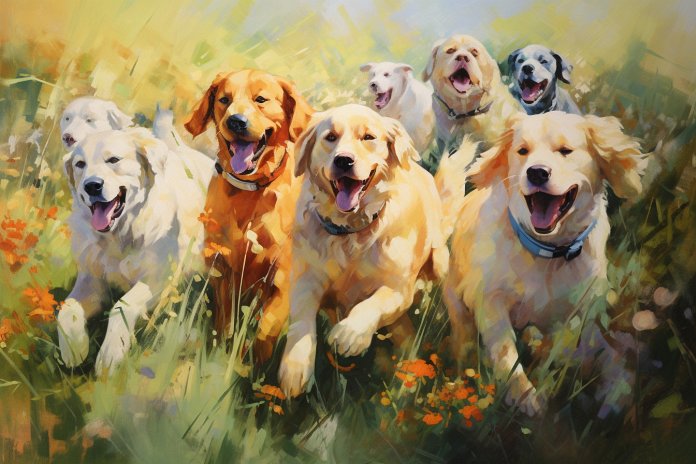
Talk shows often feature reunions between long-lost siblings, where they express their sense of loss and longing to know their family. However, these reunions can be complicated, with mixed feelings and even dislike for the newly discovered sibling. But what about our dogs? They are born in litters and spend their early weeks together. Do they too long for their long-lost kin? Do they recognize their siblings? Do we know what they remember about their siblings?
Signs a Dog Remembers Their Littermates
During reunions, well-socialized dogs are expected to greet other dogs and engage in friendly interactions. Positive interactions can be observed through body language. Dogs greet each other by sniffing the behind and proceed to display signals of dominance, submission, deference, and invitations to play. They may also appease each other with displacement behaviors like blinking, lip licking, and head tilting. Play bowing, where the front paws are extended while the hind legs stay erect, is a common signal used during playtime. Other positive behaviors include curiosity, closed mouth, head tilt, submissive rolling onto their back, and friendly tail wagging.
History and Science of Dogs Remembering Family
Research on how dogs remember is limited, but it is known that dogs form strong bonds with those close to them and can predict routines and locate objects. Dogs can also remember their owners for extended periods and recall memories from positive and negative experiences. However, their memory of events is not as long as humans or cats, and they tend to live in the present. Studies have shown that puppies can recognize the scent of their littermates for the first month, but by two years, if they have been living apart, they no longer recognize each other. The memory of littermates and how long it lasts before fading is still unknown.
Training Your Dog to be Social
Since dogs are often adopted at around 6 to 9 weeks, it is crucial to begin socializing them during this time. Daily handling, exposure to different sounds, teaching them to be comfortable with people approaching their food dish, and gradually leaving them alone to prevent anxiety are all important aspects of socialization. Obedience training, introducing them to new environments, other dogs, pets, and people, and preventing biting through appropriate chew toys and discouragement of play-biting are also essential. By expanding their world and providing positive and safe interactions, your dog can learn to be social and have positive relationships with you, your family, and the community.
“Can Dogs Remember Their Littermates? Exploring the Science Behind Canine Bonds”

Tips & Things to Know
1️⃣ Pay attention to your dog’s body language: When your dog is meeting another dog, observe their body language to see if they recognize each other and if the interaction will be positive. Look for signs such as sniffing hindquarters, play bowing, and wagging their tail.
2️⃣ Dogs can remember their littermates, but the memory fades over time: While dogs may recognize their littermates’ scent for the first month or so, this recognition fades as they grow older and live apart. There is no evidence to suggest that dogs can recognize their littermates over an extended period of time.
3️⃣ Socialize your dog from a young age: Start socializing your dog from around 6 to 9 weeks of age. Expose them to different smells, sights, and sounds without overwhelming them. Teach them to be comfortable with handling, new people, and being alone. Gradually introduce them to other dogs, pets, and environments to help them become social and have positive interactions.
Frequently Asked Questions, Answered ✅
1. Do dogs recognize their littermates?
– According to research, puppies can recognize their siblings’ smell for the first month or so, but by two years old, if they have been living apart, they no longer recognize each other.
2. What are the signs that a dog remembers another dog?
– Some signs that a dog remembers another dog include head tilting, dropped ears, lip licking, blinking, and play bowing.
3. How can you tell if a dog is happy to see its littermate?
– Signs that a dog is happy to see its littermate include sniffing hind quarters, smiling, wiggling their bottom, and taking turns with the other dog during play.
4. How long do dogs remember their littermates?
– There is currently no research on how long dogs remember their littermates, but it is believed that the memory fades over time.
5. How can you train your dog to be social?
– To train your dog to be social, you can expose them to a range of smells, sights, and sounds at a young age, handle them daily, introduce them to new people and animals in a positive way, and teach them obedience and proper behavior through consistent and patient training.